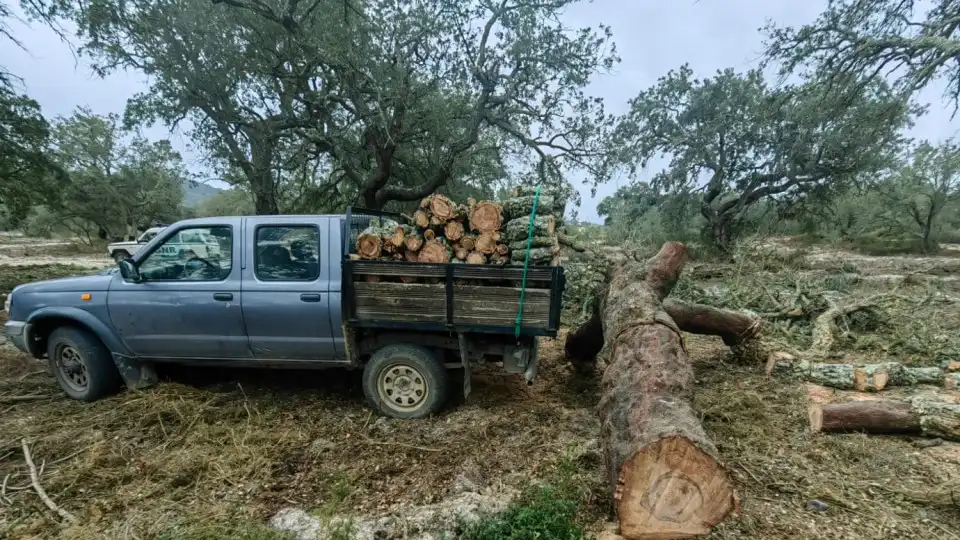The dam of Monte da Rocha, in Ourique, supplies water to the whole Baixo Alentejo but is at 09% and has not filled for a decade, although Manuel Caetano believes that there is still plenty of water for several years.
The Portuguese Environment Agency (APA) monitors 75 reservoirs and according to the data updated last week most of them (40) were with a capacity between 81 and 100%. In the panorama of water retention, however, three stand out, with less than 20% water: Bravura (12%), in the municipality of Lagos, Campilhas (10%), in Santiago do Cacém, and the worst, Monte da Rocha at 09% of capacity.
Built for human supply and irrigation, Monte da Rocha did not even make water available for irrigation this year, such was the little water it stored, destined only to serve the counties of Castro Verde, Ourique, Almodôvar, Mértola and Odemira, which in total have more than 50 thousand inhabitants.
In February of this year the tender for the work that will bring water from Alqueva to Monte da Rocha, scheduled for 2025, was published. But Manuel Caetano does not believe it.
Reserved, Manuel Caetano listens more than he talks. He has owned Restaurant a Rocha, right in front of the dam, for 42 years. And with a good memory he says: “The last time I saw it full was in 2013, since then it’s always been going down.
What was once a great reservoir of water brought by the Sado River for irrigation and for the people of five municipalities, now has small lakes in the center, far from a campsite that once had water sports on the “menu,” and far from the village of Chada Velha, which “used to be an islet when the dam filled up,” recalls Adílio Guerreiro, a farmer and worker at the Ourique City Hall.
It seems difficult for those small, scattered lakes to supply water to five municipalities, but Manuel Caetano, who has been looking at the dam for years, guarantees that there will be no shortage of water in the coming years. And Ilídio Martins, president of the Association of Irrigators and Beneficiaries of Campilhas and Alto Sado (Alto Sado is another name for Monte da Rocha), based on technical data, assures the same.
The association is the managing entity of the dam and according to its president the water will not be lacking.
“We have reserve for another year, but we hope that that reserve that is there will be increased with some rain and that there will be precipitation next winter, because it would be very bad if that didn’t happen,” he tells.
For now, Monte da Rocha doesn’t even look like a dam. Grass grows and dries out on the walls and bed, and where there should be water, reeds, cistus, heather, brambles, and at least one small pine tree is already there, a sign that the water has not covered the ground for a long time.
Water marks are visible on the banks, some with dates that Manuel Caetano knows by heart.
Sitting on the restaurant’s esplanade, the heat that stays in the afternoon and that the water mirror no longer softens, Manuel Caetano says that there are still people who go fishing there, but now nobody takes boats anymore. “Now it’s no longer a pleasure”.
Manuel Caetano talks about the times he lived outside of there, in Lisbon, but he especially remembers the last 42 years, when the dam was a place of tourism, when the main road to the Algarve passed by the door, the restaurant was always full, cars and buses parked all around. “In those days we were open night and day, we couldn’t even close.
On the hot afternoon only Adílio Guerreiro stopped there. He too walked around Lisbon, but he too returned to where he was born, Monte da Rocha, to raise sheep and live much happier, far from the hustle and bustle of the city.
He only regrets that the water from the dam has receded like this and taken with it the life of yesteryear. “Unfortunately we have this bad luck of nature,” he says.
This is also bad luck for part of the 450 members of the Irrigators Association, who have no water to irrigate. “We are one of the few associations in the country that cannot irrigate due to lack of water,” laments Ilídio Martins.
The association covers the municipalities of Santiago do Cacém, Odemira and Ourique, but Ourique has practically no water for irrigation and part of Santiago does not either.
The association manages five reservoirs, two of the three that are “in the red”, Campilhas in addition to Monte da Rocha. Campilhas was last filled in 2013 and the water this year is only for emergency irrigation and to water the animals. And solutions for Campilhas, for now, depend on the heavens.
Monte da Rocha is still different. Ilídio Martins says that it has only 9.5 million cubic meters of water, that this year it didn’t even open for agriculture, but that the public tender for the execution of the work is underway and that within two years the water from Alqueva may reach there. And make up for “nature’s bad luck”.








